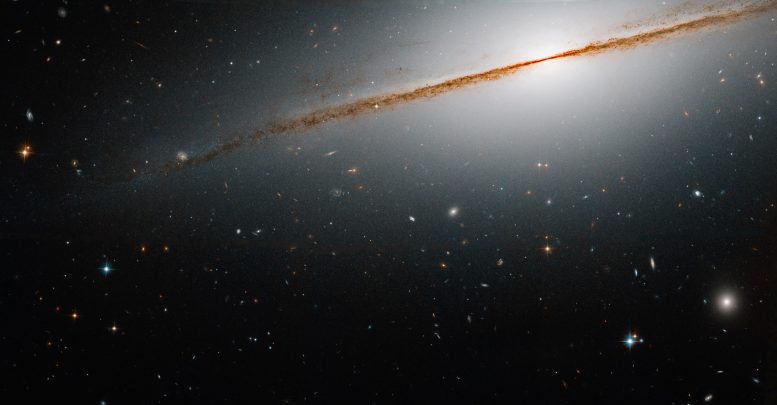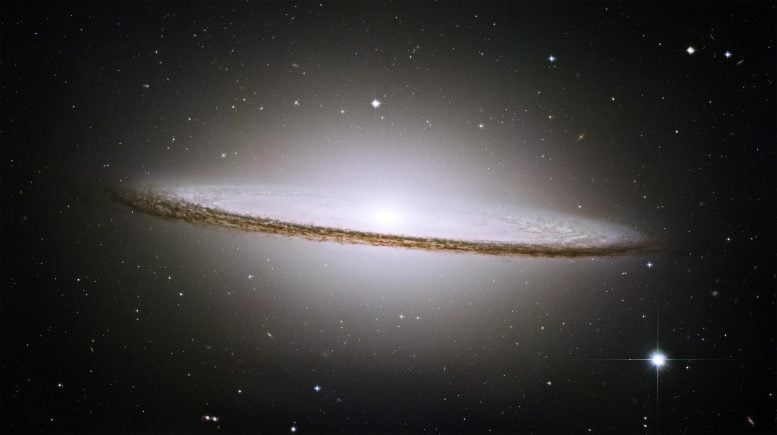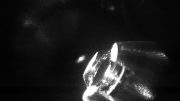
Hubble Space Telescope image of galaxy NGC 7814, known as the “Little Sombrero.” Credit: NASA, ESA, and R. de Jong (Leibniz-Institut fur Astrophysik Potsdam); Image processing: G. Kober (NASA Goddard/Catholic University of America)
NASA’s Hubble Space Telescope has allowed astronomers to view galaxies of all shapes and sizes from nearly every angle. When a galaxy is seen edge-on, the mesmerizing perspective reveals a dazzling slice of the universe. The “Little Sombrero,” also known as NGC 7814 or Caldwell 43, is one such galaxy.
Set against a speckled backdrop of more remote galaxies, the Little Sombrero features a bright central bulge, a thin disk full of dust, and a glowing halo of gas and stars that sprawls out into space. It is located roughly 40 million light-years from Earth, stretches 80,000 light-years wide, and is billions of years old.

NASA’s Hubble Space Telescope has trained its razor-sharp eye on one of the universe’s most stately and photogenic galaxies, the Sombrero galaxy, Messier 104 (M104). The galaxy’s hallmark is a brilliant white, bulbous core encircled by the thick dust lanes comprising the spiral structure of the galaxy. As seen from Earth, the galaxy is tilted nearly edge-on. We view it from just six degrees north of its equatorial plane. This brilliant galaxy was named the Sombrero because of its resemblance to the broad rim and high-topped Mexican hat. Credit: NASA and The Hubble Heritage Team (STScI/AURA)
The dusty spiral is named after the grander-appearing Sombrero galaxy (image above), which resembles a broad-brimmed Mexican hat. Also viewed from its edge, the Sombrero galaxy is located just 28 million light-years away and looks larger than the Little Sombrero. In reality, they are nearly the same size, but the Sombrero appears bigger because it is closer.
This image of the Little Sombrero is a combination of visible and infrared observations captured by Hubble’s Advanced Camera for Surveys in 2006. The observations were taken to assist astronomers in studying the galaxy’s stellar populations, and to help shed light on the evolution of this galaxy and others like it.









Be the first to comment on "Hubble Spots a “Small” Sombrero – Just 80,000 Light Years Across"